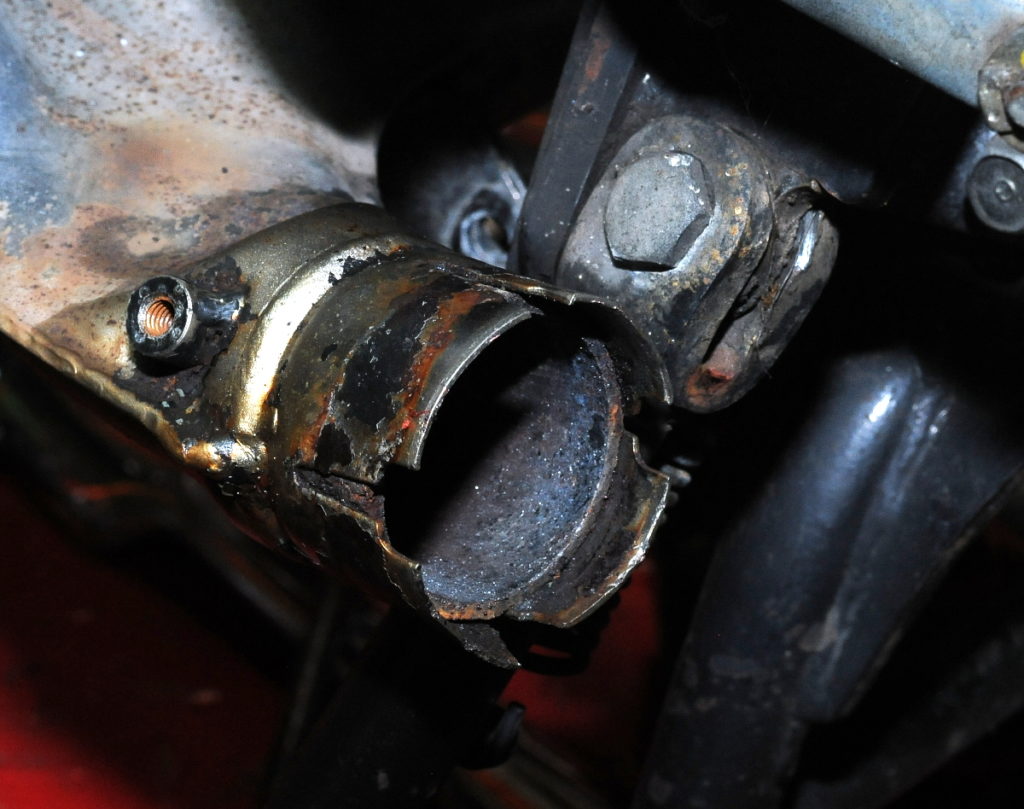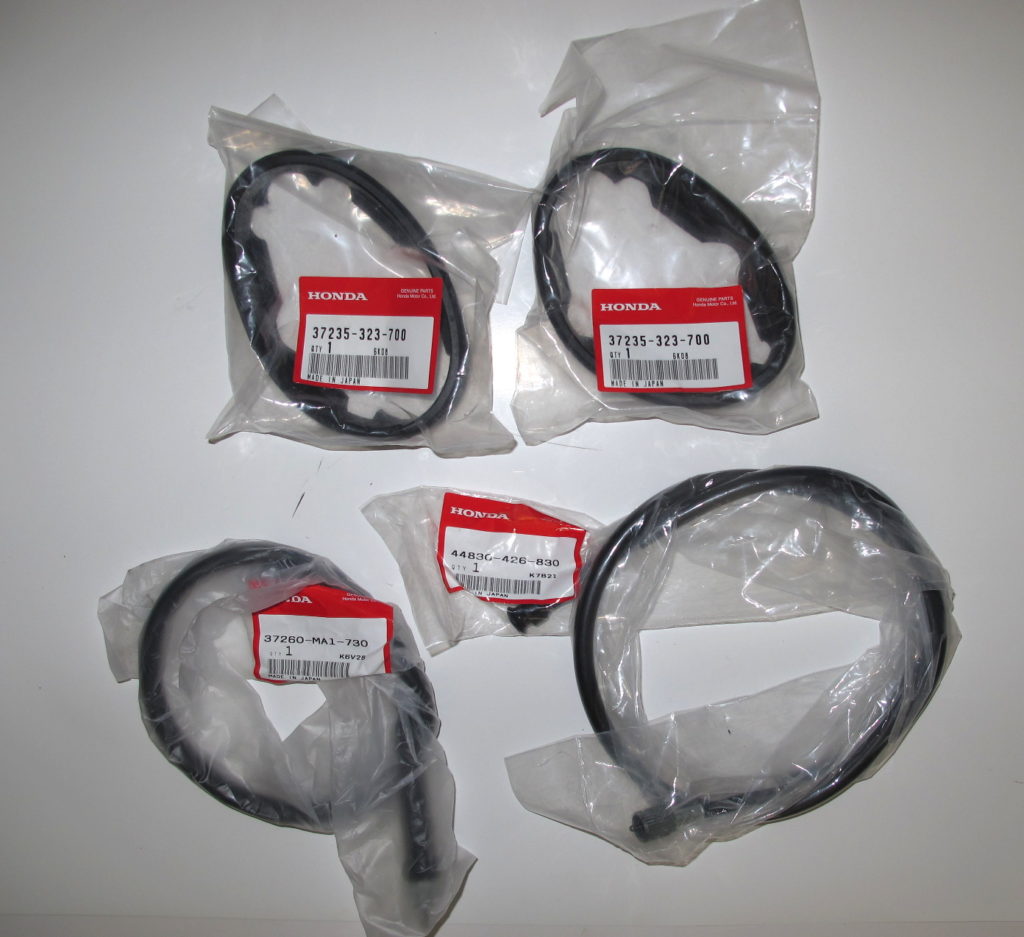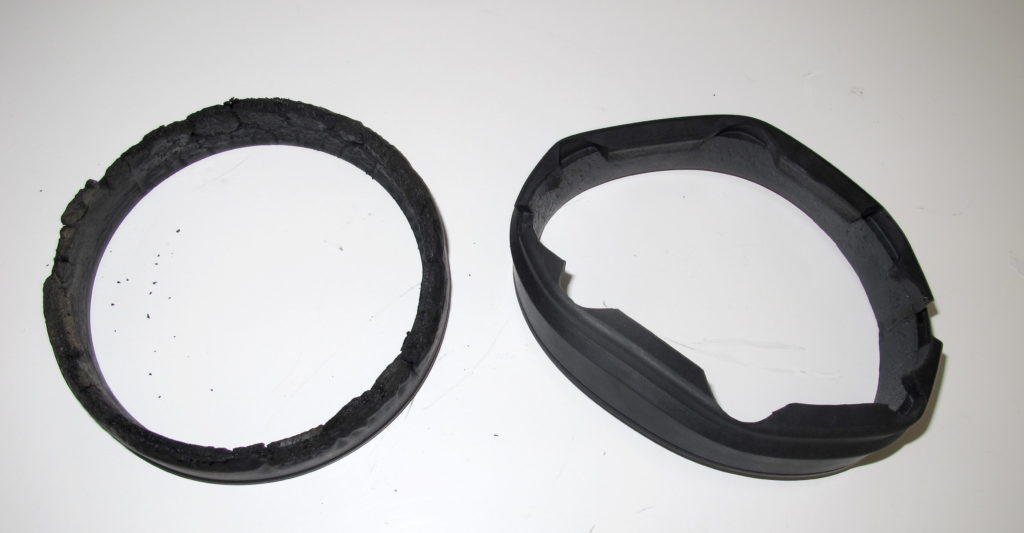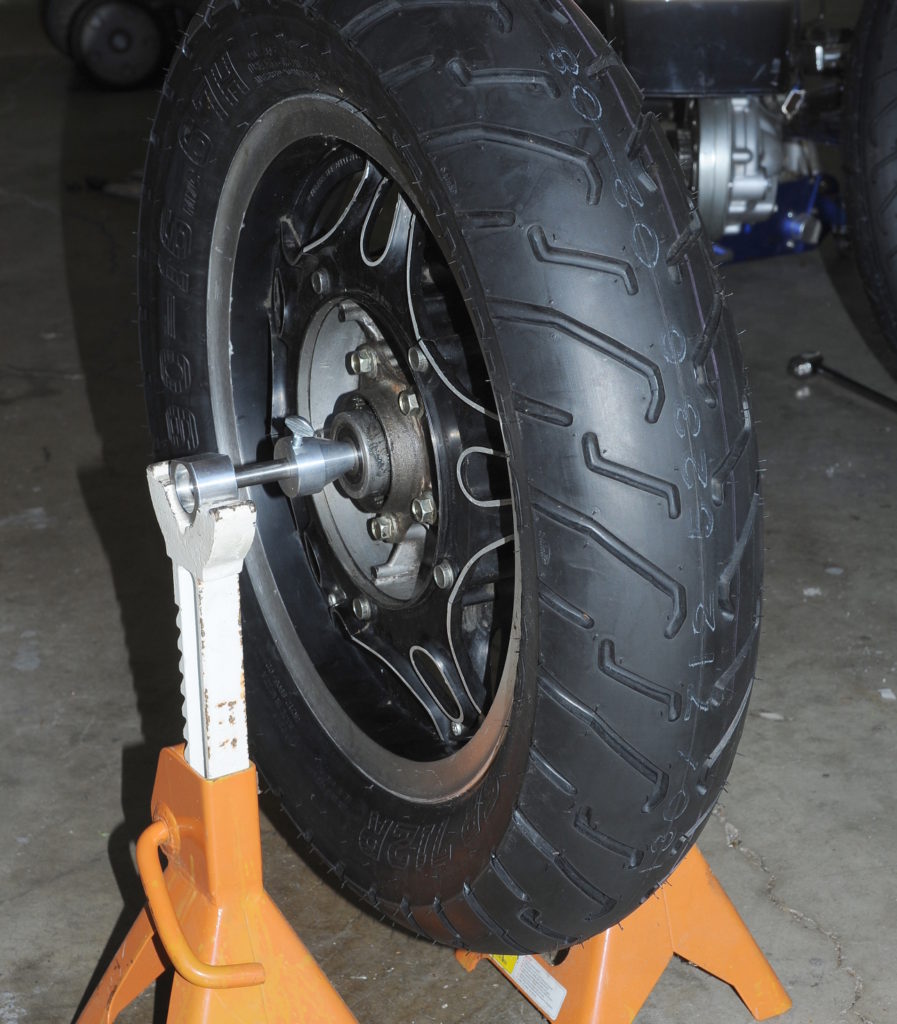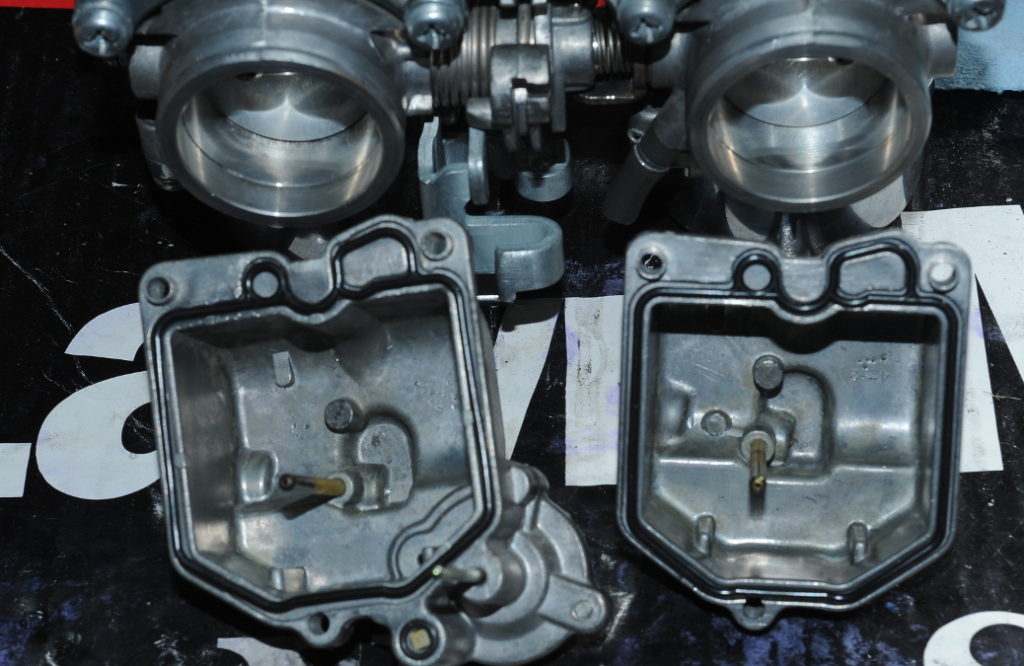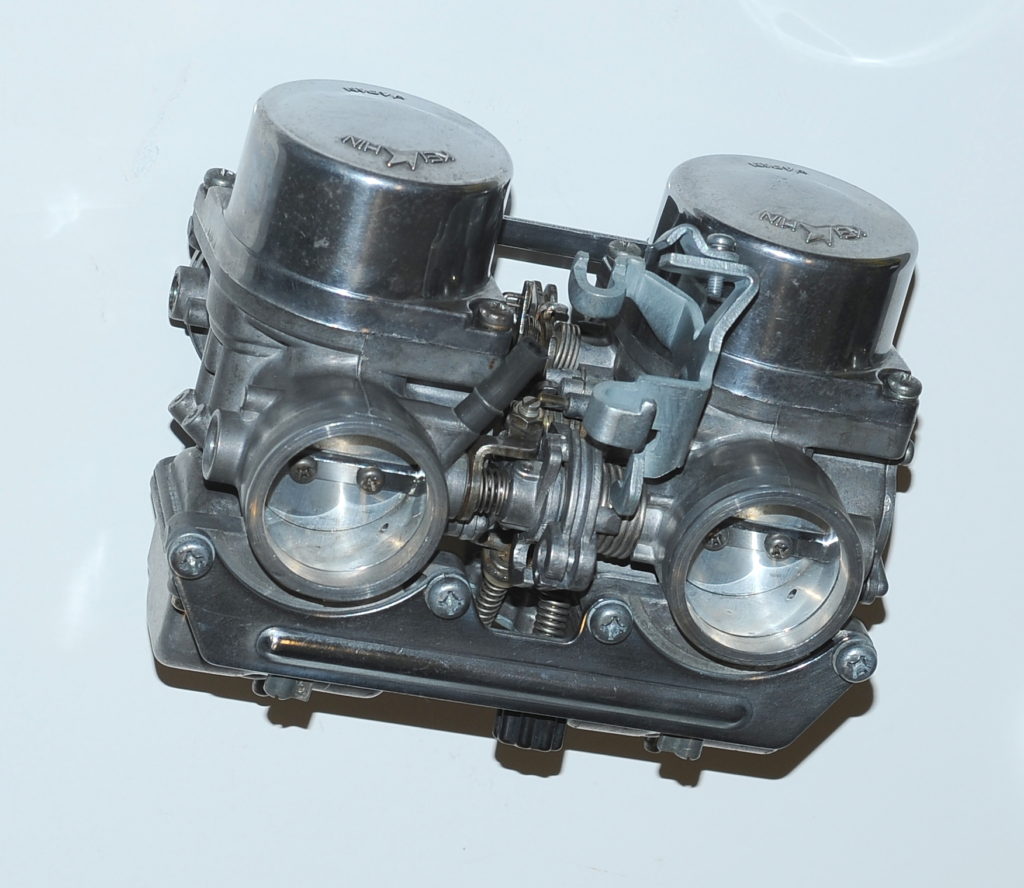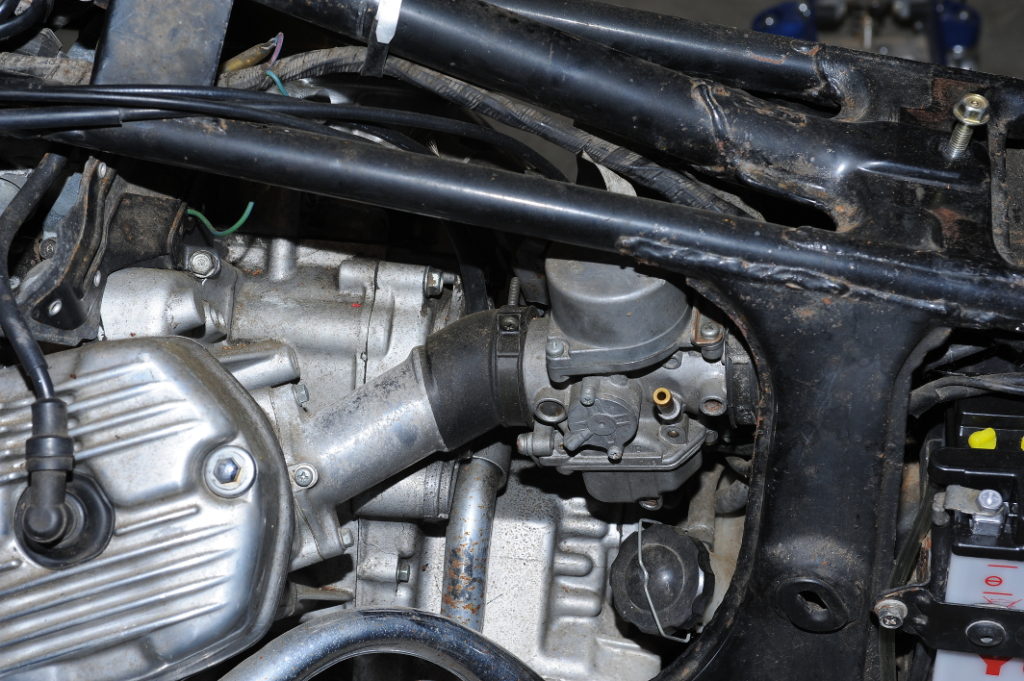Mileage: 29,404
Maintenance:
- Rebuilt front forks replacing:
- Dust caps
- Fork Seals
- Fork-tube bushings
- All air line o-rings
- Fork oil: 210cc ATF
- Torqued 14mm lower pinch bolts to 25 ft-lb.
- Torqued 10mm upper pinch bolts to 11 ft-lb
- Torqued 6mm socket cap bolt to 11 ft-lb
I recently discovered a few drops of oil on the floor under the left front fork. I couldn’t tell if it was fork oil, or brake fluid, but the fork was very wet above the dust cap, so that’s where I started. I’ve purchased parts to rebuild the brake caliper should that also be required.
Upon closer inspection I discovered that the left-fork dust cap was cracked. Even though the forks were still holding air pressure reasonably well, given the damp tube and cracked rubber I decided it was time to rebuild the forks.
 The fork oil was dirty, but not alarmingly so. This is the left fork. The oil in the right fork was a little cleaner. There are no signs of water contamination, even though the cracked fork seal had allowed a bit of water to get into the slider.
The fork oil was dirty, but not alarmingly so. This is the left fork. The oil in the right fork was a little cleaner. There are no signs of water contamination, even though the cracked fork seal had allowed a bit of water to get into the slider.  Here’s the disassembled left fork before cleaning. As always, you can click on the pictures for a larger image. On both forks I cleaned out a small amount of black crud in the bottom of both the sliders and the pistons.
Here’s the disassembled left fork before cleaning. As always, you can click on the pictures for a larger image. On both forks I cleaned out a small amount of black crud in the bottom of both the sliders and the pistons.
 As you can see from the picture, the main spring is progressive, or at least wound with two pitches. In the diagram below, there is a washer between the two springs. What looks like another washer above the short spring is actually the o-ring for the cap bolt.
As you can see from the picture, the main spring is progressive, or at least wound with two pitches. In the diagram below, there is a washer between the two springs. What looks like another washer above the short spring is actually the o-ring for the cap bolt.

The left fork-tube bushing was about 60% worn, that is copper was showing on more than half of the exterior. The right fork-tube bushing was closer the the 75% wear limit, so both were replaced.
Here’s the left fork-tube bushing next to its replacement. On fork-tube bushings the (black) Teflon is on the outer surface.
 The slider bushings and back-up rings showed no signs of wear on either fork. On the slider bushings the Teflon is on the inner surface. Other than the disassembled fork picture above, I didn’t take pictures of the white piston rings, but they were also in good shape, though the right-side ring showed a bit of yellow discoloration. These should probably be replaced next time the forks are apart.
The slider bushings and back-up rings showed no signs of wear on either fork. On the slider bushings the Teflon is on the inner surface. Other than the disassembled fork picture above, I didn’t take pictures of the white piston rings, but they were also in good shape, though the right-side ring showed a bit of yellow discoloration. These should probably be replaced next time the forks are apart.
 I used the old seals and a length of PVC pipe to drive the new seals in. With the old seal on top of the new seal, the new seal will be in the correct position when the old seal is almost flush with the top of the slider (without the backup plate and circlip). It was much harder than expected to seat the new seals. However, once seated, the old driver seal is easily removed, though you may need to use a pick to pull it out far enough to grab it with a fingernail.
I used the old seals and a length of PVC pipe to drive the new seals in. With the old seal on top of the new seal, the new seal will be in the correct position when the old seal is almost flush with the top of the slider (without the backup plate and circlip). It was much harder than expected to seat the new seals. However, once seated, the old driver seal is easily removed, though you may need to use a pick to pull it out far enough to grab it with a fingernail.
The manual specifies 210ml of ATF as the fork oil in each fork. I measured the oil using a baby bottle I picked up at the local dollar store. Baby bottles are just the right size and handily come with volume markings. I added a line to make it easier to see.
 These are the dust caps, seals, and o-rings that I installed. The only part that I didn’t replace that I should have was the o-ring that fits around the cap bolt. Fortunately those parts can be easily replaced without removing the forks — if needed. The small o-rings were installed on both ends of the hose that connects the forks, and on the Schrader fill valve on the right fork.
These are the dust caps, seals, and o-rings that I installed. The only part that I didn’t replace that I should have was the o-ring that fits around the cap bolt. Fortunately those parts can be easily replaced without removing the forks — if needed. The small o-rings were installed on both ends of the hose that connects the forks, and on the Schrader fill valve on the right fork.
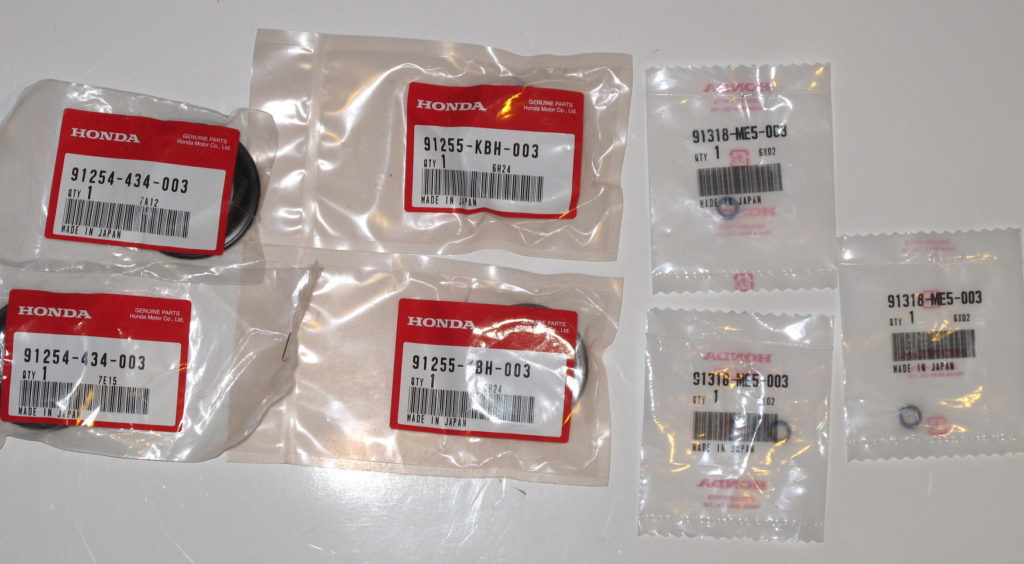 Up Next: With the forks done, and while the front wheel and fender are off the bike, I’m going to remove the radiator, and possibly the fan so that I can install the new tachometer cable.
Up Next: With the forks done, and while the front wheel and fender are off the bike, I’m going to remove the radiator, and possibly the fan so that I can install the new tachometer cable.

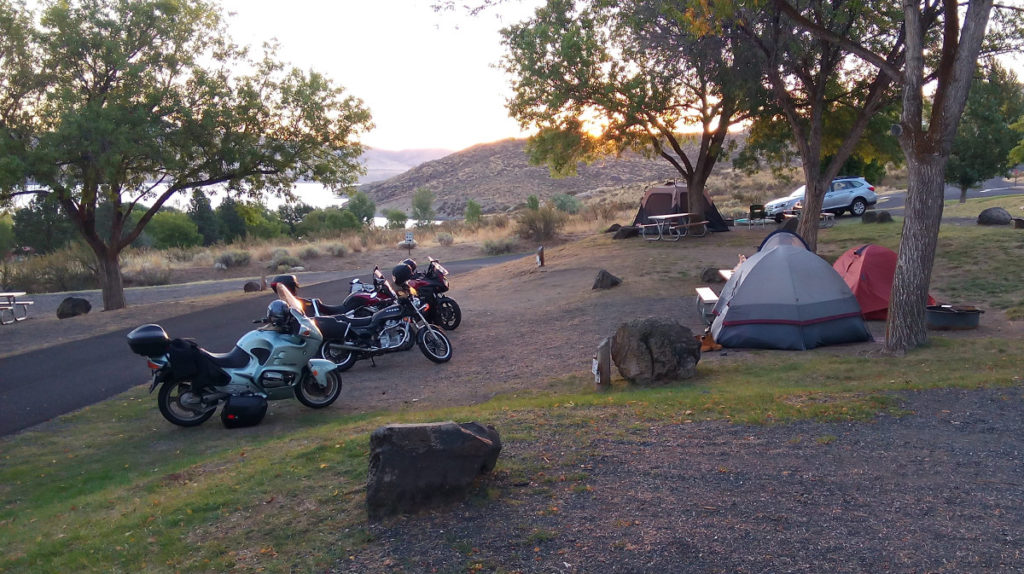
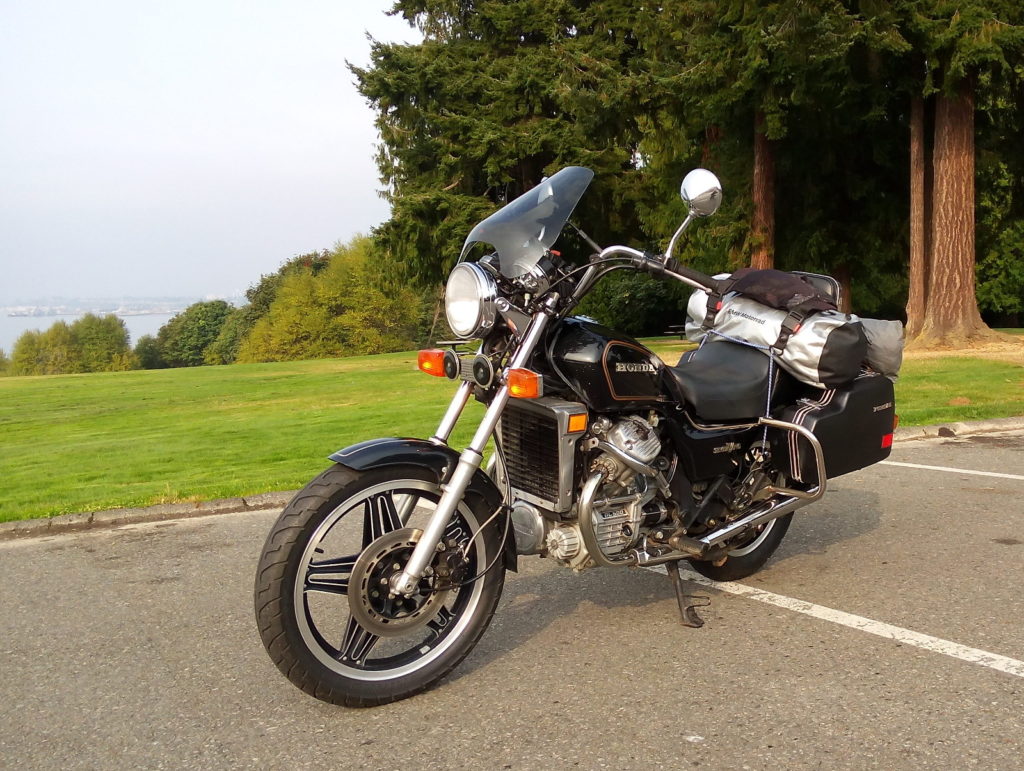
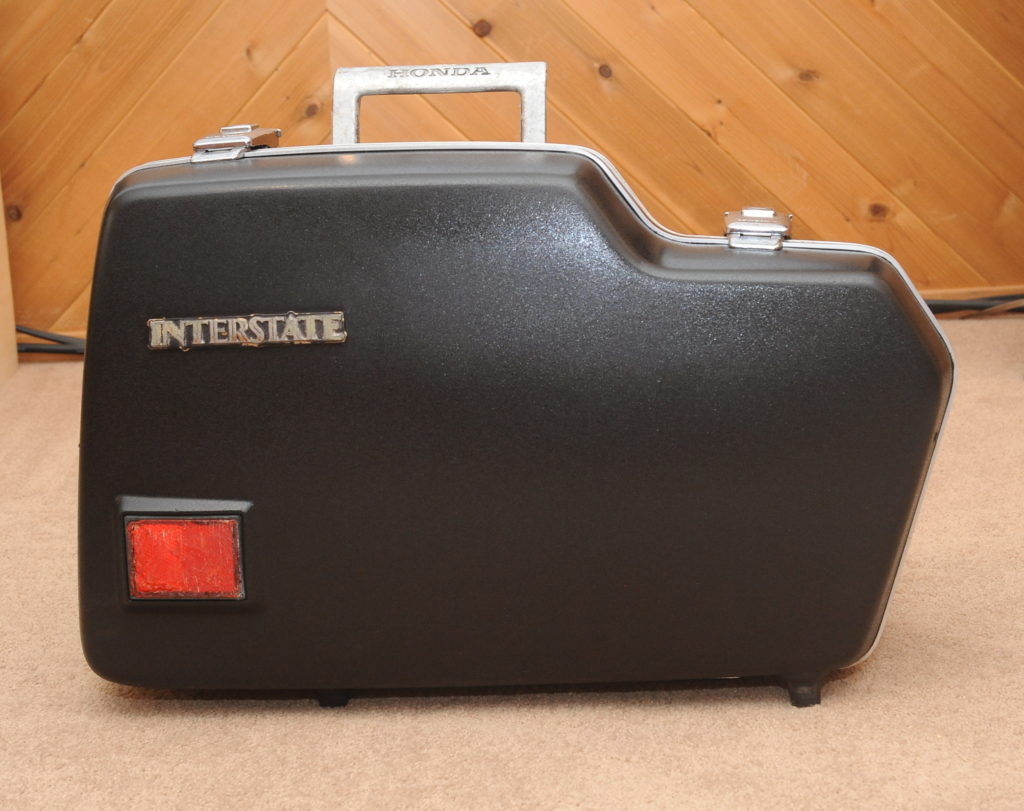

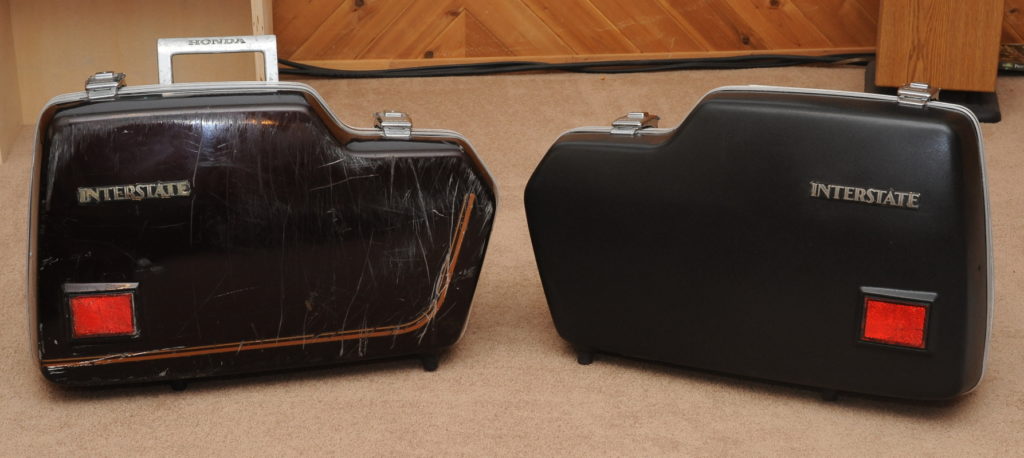


 The extender mounts as shown with two 6×45 bolts and two 6×16 bolts. Before adding the bracket, the tail lights were mounted to flat tabs at the location now occupied by a fender washer and bolt. Unlike the tabs on the extender which are welded on, these tabs have a bolt and nut, allowing them to be removed.
The extender mounts as shown with two 6×45 bolts and two 6×16 bolts. Before adding the bracket, the tail lights were mounted to flat tabs at the location now occupied by a fender washer and bolt. Unlike the tabs on the extender which are welded on, these tabs have a bolt and nut, allowing them to be removed. 
 Picture taken
Picture taken 
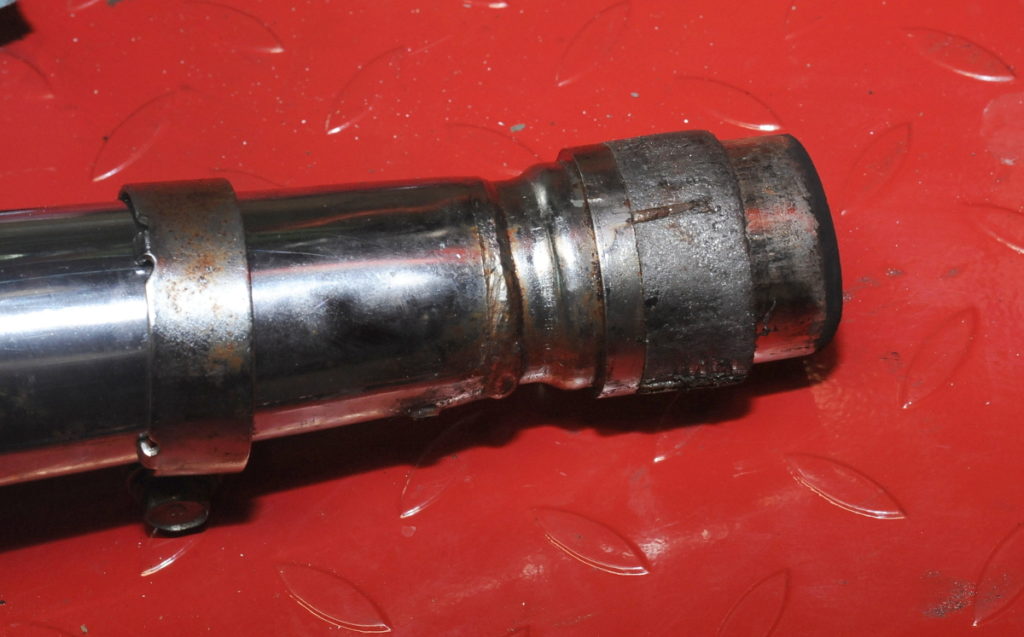
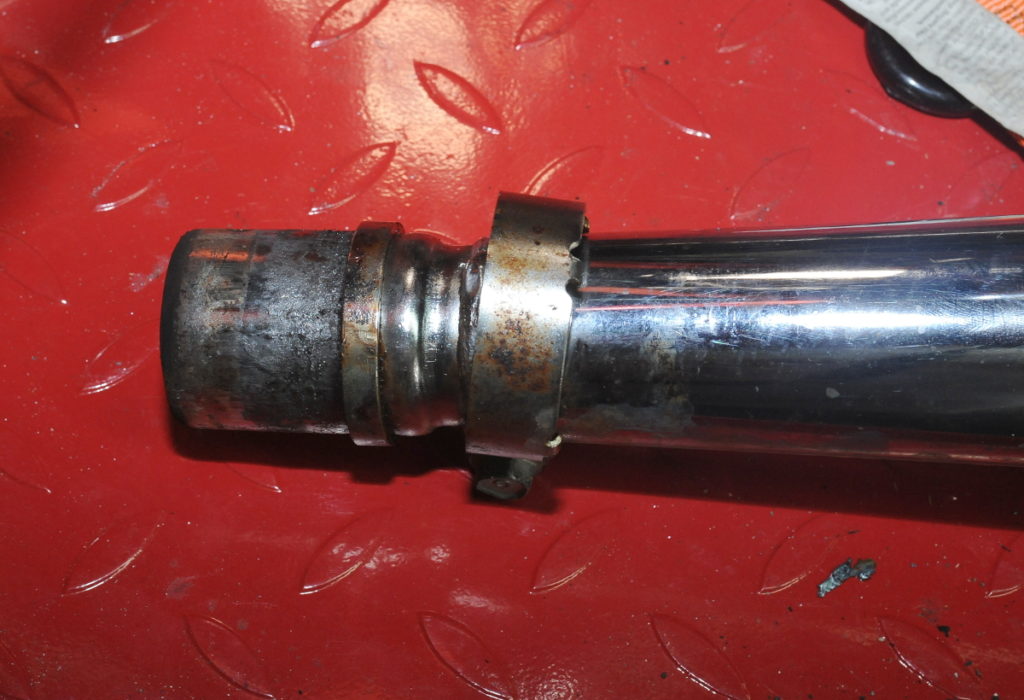 Here’s the sealing ring for the left muffler. I didn’t try to remove it from the power box.
Here’s the sealing ring for the left muffler. I didn’t try to remove it from the power box.